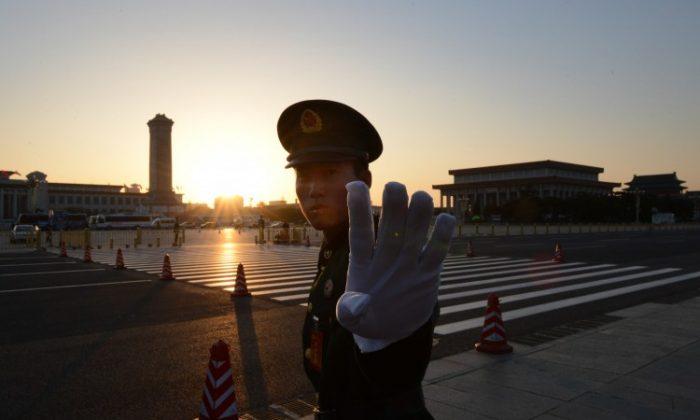China’s rapid industrialization and urbanization along with over exploitation and abuse of natural resources has led to serious water pollution and water scarcity that is approaching crisis proportions.
A recently released annual environmental bulletin by China’s Ministry of Environmental Protection (MEP) reveals that over 30 percent of the country’s rivers and over 50 percent of groundwater are below national water quality standards. The continuing deterioration of water quality affecting people’s lives and health has become one of the most urgent existential crises for China.
Severity
In the first half of 2013, 12 state-controlled surface water monitoring stations revealed that heavy metal content at these sites surpassed national water quality standards by 22 times. Water samples taken from the Yangtze River and the Yellow River showed that mercury exceeded safe levels by 50 percent, followed by arsenic at 36.4 percent, according to a semiannual report by the MEP, released on Aug. 2.
Wastewater discharged nationwide in 2012 totaled 68.46 billion tons, according to the bulletin. Of the 1,200 rivers being monitored, 850 are contaminated, and over 90 percent of watersheds were contaminated.
State-controlled sections of the top 10 watersheds, including the Yangtze and Yellow rivers, 20.9 percent had “mild” pollution and 10.2 percent “medium-level” pollution, according to the statistical data in the bulletin.
Of the 4,929 groundwater-quality monitoring points in 198 cities, 57.3 percent reported “poor” or “very poor” water quality.
Groundwater quality has been degraded from massive dumping of untreated or partially treated wastewater. In addition, increased urbanization and industrial development in recent years have led to a growing overdraft of groundwater in some regions, which has significantly lowered the water level, Chinacitywater.org cited Zhang Hongtao, chief engineer of China’s Ministry of Land and Resources as saying.
“Residential sewage, municipal wastewater, industrial effluents, and agricultural chemicals are dumped into rivers, which has inevitably contaminated the groundwater and threatened groundwater sources. Water pollution problems have become grim,” Zhang said.
Causes
According to the Economic Information Daily, pollutants from industrial, agricultural, and residential sources are the major causes of water pollution in China. Industrial pollution is caused by directly discharging untreated industrial effluents into nearby streams, lakes, rivers, or oceans.
Agricultural pollution refers to contamination of bodies of water through agricultural wastewater, fertilizers, and pesticides in rural regions. Excessive pesticide use can cause water pollution when the chemicals remain in the soil after irrigation and are absorbed into the groundwater by rain.
Extensive use of fertilizers also results in significant concentrations of nutrients like nitrogen and phosphorus in agricultural runoffs that can contribute to harmful algae growth, another major form of water pollution.
Residential pollution from household activities, including untreated residential wastewater and improper disposal of chemicals, also contribute to water pollution.
Despite its national 450 billion yuan (roughly US$74 billion) wastewater treatment budget for the 12th five-year economic plan (2011–2015), China’s present sewage treatment capacity is only at 20 percent, while about 80 percent of wastewater is discharged, often untreated, directly into bodies of water, according to Chachaba.com, a Shenzhen-based three dimensional map service website.
According to Chachaba, 54 out of 78 main rivers in China are polluted, and half of the top seven watersheds are contaminated. Up to 86 percent of rivers running through cities are considered polluted as contamination exceeds national standards.
Contaminants
Over 2,000 contaminants have been identified in water tests, mainly organic pollutants, carbon compounds, and heavy metals—765 of them are contained in tap water, including 190 hazardous substances and 20 carcinogens—according to Chachaba.com.
Water pollution poses an alarming threat to China’s drinking water. Approximately 82 percent of the Chinese population draws its drinking water primarily from shallow wells and freshwater lakes, but 75 percent of these water sources are seriously contaminated with bacterial concentrations exceeding hygienic water quality standards. Nearly half of China’s major cities and towns do not meet state drinking-water quality standards.
Less than 11 percent of the Chinese population has water supplies that meet state standards for drinking-water quality. As much as 65 percent of the population uses drinking water from unsafe sources. The most common water quality problems they encounter are muddy appearance, abnormal taste, inorganic contaminants such as fluoride and arsenic, industrial chemicals, and disease-causing organisms, according to Chachaba.com.
Arsenic poisoning has been identified as one of the country’s “most important endemic diseases.” Nearly 20 million Chinese live in areas at high risk of arsenic contamination in their water supplies, according to an international five-year research project spearheaded by Dr. Guifan Sun of China Medical University that was released on Aug. 22.
Scarcity
On top of pollution, China also lacks sufficient freshwater resources to begin with. With a population of over 1.3 billion and 2,300 cubic meters of water per capita annually, this amounts to only a quarter of the world’s average use level, ranking 121st in the world. CNN quoted United Nations as saying that China is 1 of 13 countries with extreme water shortages.
Population growth, economic development, urbanization, and pollution have all exacerbated existing shortages of freshwater resources. According to the Ministry of Water Resources, out of the country’s 663 cities, more than 400 suffer from water deficiencies, with 110 categorized as “severe.”
Reportedly 232 million people face severe water shortages in an annual average per capita of water resources.
Netizens’ Concerns
The critical water pollution situation has sparked concern among Chinese bloggers.
Netizen “Green As Ever” wrote on Sina Weibo, China’s Twitter-like microblogging services: “The death of a starved polar bear serves as a warning to mankind, that endless exploitation of natural environments brings nothing but destruction. If today we do not pay attention to ecological sustainability, we will be engulfed by deteriorating environments in the not too distant future. If we demolish windbreaks and greenbelts, and pollute mountains and rivers, the day will come when water costs more than gasoline, and food more than gold; and then we may want to cry, yet have no tears.”
“Iron Blood Tender Feeling” posted a blog on Tencent Weibo, one of China’s leading microblogging platforms: “Facts have proven that China has the most short-sighted economic development in the world. Our ancient civilization, with a history of thousands of years, has been completely distorted after only decades of development. Can all those [formerly] pure rivers and green mountains ever be restored?”
Written in English by Gisela Sommer.




Friends Read Free